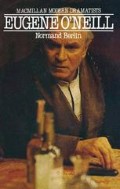Abstract
Long Day’s Journey Into Night is exactly that: long (four hours’ playing time, long because endless, long because repetitive, long because painful), day (the day of the play — 8.30 a.m. to midnight — a day in the life of the Tyrones, a day in life, the day of life), journey (a trip from day to night, a trip in time — both forward and backward — a quest for causes, a pilgrimage through life), night (the night of the play, the night of dreams, death). Each literal word, like the play’s realism, suggests more beyond itself, ripples of significance ever widening.
Preview
Unable to display preview. Download preview PDF.
References
John Henry Raleigh, ‘O’Neill’s Long Day’s Journey Into Night and New England’s Irish-Catholicism’, in John Gassner (ed.), O’Neill: A Collection of Critical Essays (Englewood Cliffs, NJ: Prentice-Hall, 1964) pp. 124–41.
I discuss Jamie’s interest in prostitutes in ‘Ghosts of the Past: O’Neill and Hamlet’, The Massachusetts Review, xx (Summer, 1979) 312–23.
‘Expressive’ realism is what Jean Chothia convincingly labels O’Neill’s method in his last plays: Forging a Language: A Study of the Plays of Eugene O’Neill (Cambridge: Cambridge University Press, 1979) pp. 185–91.
‘Dynamic realism’ is the fine phrase that Timo Tiusanen attaches to O’Neill’s last plays: O’Neill’s Scenic Images (Princeton: Princeton University Press, 1968) p. 249.
Thomas R. Dash, ‘Long Day’s Journey Into Night’, Women’s Wear Daily (8 November 1956)
Jordan Y. Miller (ed.), Playwright’s Progress: O’Neill and the Critics (Chicago: Scott Foresman, 1965) p. 136. Hereafter cited as Miller, Playwrights Progress.
Walter Kerr, ‘Long Day’s Journey Into Night’, New York Herald Tribune (8 November 1956) reprinted in Miller, Playwright’s Progress, p. 137.
Harold Clurman, Lies Like Truth (New York: Macmillan, 1958) p. 32.
Dash, in Miller, Playwright’s Progress, p. 136.
Kerr, in Miller, Playwright’s Progress, p. 137.
John Simon, Uneasy Stages (New York: Random House, 1975) p. 331.
Stanley Kauffmann, Persons of the Drama (New York: Harper & Row, 1976) p. 134.
Simon, Uneasy Stages, p. 331.
Martin’s comment came in a ‘Critics’ Roundtable’ discussion of O’Neill by actors and directors, New York Theatre Review (March 1978) 22.
Jack Kroll, ‘Passionate Journey’, Newsweek (20 April 1981) p. 104.
Author information
Authors and Affiliations
Copyright information
© 1982 Normand Berlin
About this chapter
Cite this chapter
Berlin, N. (1982). Long Day’s Journey Into Night. In: Eugene O’Neill. Macmillan Modern Dramatists. Palgrave, London. https://doi.org/10.1007/978-1-349-16913-9_1
Download citation
DOI: https://doi.org/10.1007/978-1-349-16913-9_1
Publisher Name: Palgrave, London
Print ISBN: 978-0-333-28501-5
Online ISBN: 978-1-349-16913-9
eBook Packages: Palgrave Literature & Performing Arts CollectionLiterature, Cultural and Media Studies (R0)

